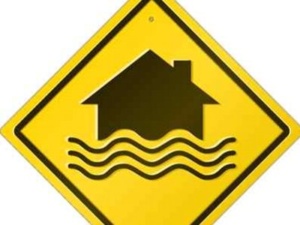 Mel Price, Assistant Chief Executive, BRUFMA explains…
Mel Price, Assistant Chief Executive, BRUFMA explains…
The topic of how to make UK homes resilient to cope with the effects of flooding is high on the agenda and promises to be so for the foreseeable future due to the likelihood of increased flooding events resulting from climate change. A new British standard on flood resilience BS 85500 highlights the need to carefully consider the type of insulation selected for buildings that have been, or could be, exposed to the effects of flooding. The closed cell structure of PUR insulation can help to increase a building’s resilience against the economic and emotional damage caused by flooding.
As well as clarifying the at-risk properties where flood resilient materials should be specified, the standard has information on the preferred methods of new wall construction. While the standard recommends that solid walls with external insulation are preferred to cavity walls for complete avoidance of contamination from water in the cavity, it advises that if cavity walls are being built then rigid closed cell insulation materials should be used. This is because of the products’ physical double-whammy of being able to retain structural integrity while resisting the absorption of moisture.
Among its wide-ranging look at flood resilience and resistance including planning issues, BS 855000 bases guidance around materials specification on the major independent report commissioned by DCLG in 2007 which was published as guidance entitled ‘Improving the Flood Resilience of New Buildings’. This provides a revealing comparison of materials for achieving flood resilience in cavity wall constructions, giving rigid PU foam a ‘Medium’ rating for both water penetration and drying ability (with water-retaining mineral wool and blown-in expanded mica rated ‘Poor’ for both factors). On “retention of pre-flood dimensions and integrity”, rigid PU benefits further from its closed-cell structure’s water resistance with a ‘Good’ rating (the highest rating awarded in the report’s findings on walls).
While the new standard covers cavity wall insulation, with the method still likely to be a common design option for housebuilders, it says that the preferred option would be solid masonry walls with external insulation as it can be more easily replaced following any flood damage. With construction in flood plains continuing to be likely as the UK seeks to build over 200,000 houses per year, the provision of materials which can be removed easily is sadly going to be a key consideration going forward, enabling insurers and homeowners to remedy properties so they can be quickly returned to use.
BRUFMA is involved in research work being undertaken by BRE around retrofitting properties post-flooding, including looking at simple ‘replacability’ approaches such as fitting plasterboard horizontally as opposed to vertically, so that it is easier to remove at a low level. Some homeowners may baulk at the idea of undergoing a flood resilience report which will alert potential buyers to the problems, but any property survey is going to show up the risk posed by the location. A responsible risk management and remedial approach has to be a positive in terms of the commercial value of making the asset more sustainable in the long term. Education of homeowners and housebuilders is crucial so that they are aware of the independent findings within the 2007 DCLG report, as part of the awareness-raising which is going to result from BS 85500 and other initiatives.
A sign of the high-level focus on the importance of flood resilience measures is that as well as the Bonfield Review, (now called Every Home Matters (EHM)), looking at protecting consumers in the world of energy efficiency incentives, another review is underway looking at the effect of flooding on homes. The focus of EHM is going to move beyond just the right materials to the rigour and quality control to ensure that installations are fit for purpose. Surely the overarching quality and standards body which is being proposed to ensure good practice across the energy efficiency retrofit industry needs to be extended to installation of flood resilience in the same way, giving homeowners confidence in measures taken using a joined-up approach. After all, in the end, building materials which will protect homes are only as good as the installation practices used.

